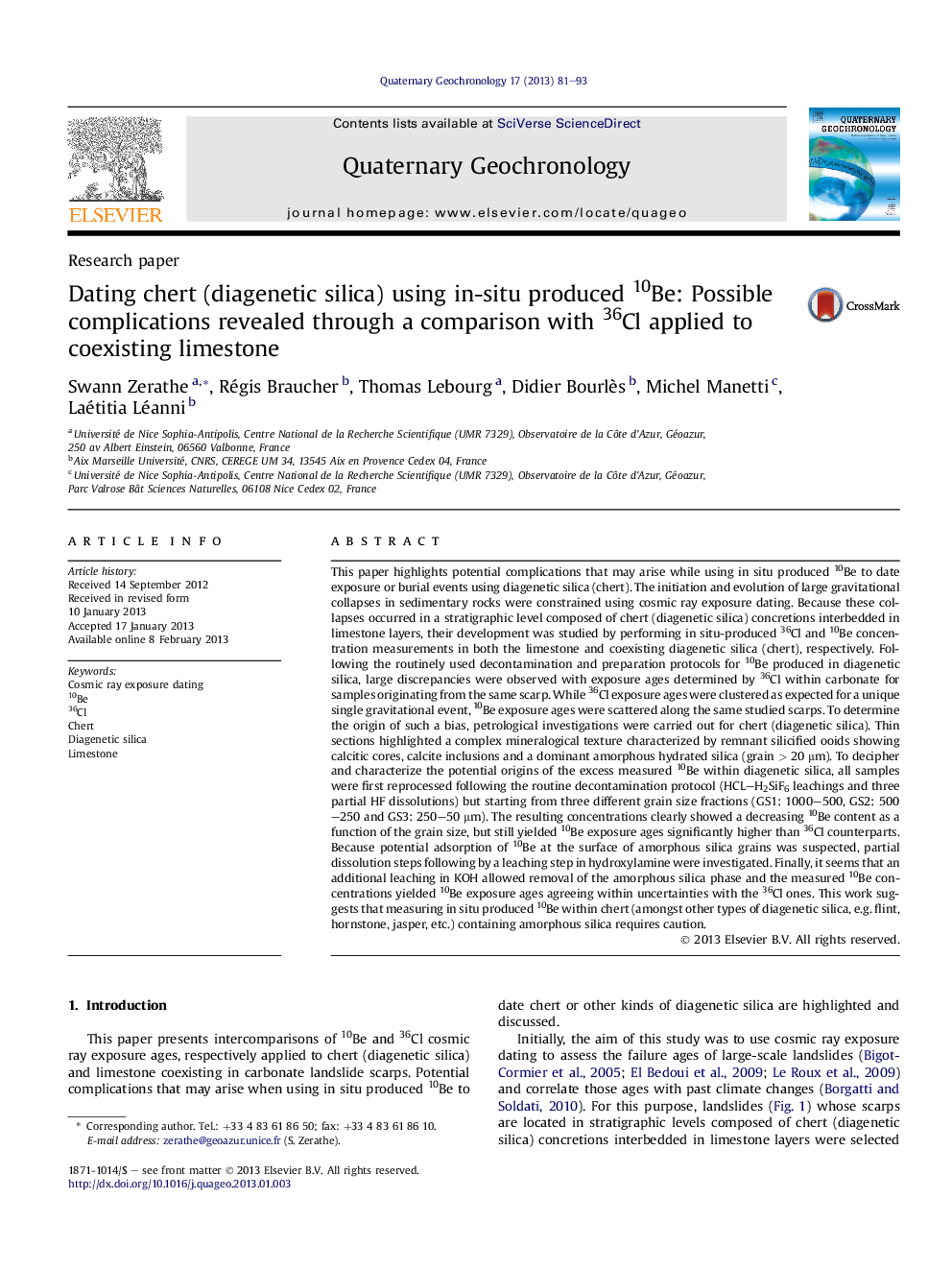| کد مقاله | کد نشریه | سال انتشار | مقاله انگلیسی | نسخه تمام متن |
|---|---|---|---|---|
| 4725059 | 1639859 | 2013 | 13 صفحه PDF | دانلود رایگان |

This paper highlights potential complications that may arise while using in situ produced 10Be to date exposure or burial events using diagenetic silica (chert). The initiation and evolution of large gravitational collapses in sedimentary rocks were constrained using cosmic ray exposure dating. Because these collapses occurred in a stratigraphic level composed of chert (diagenetic silica) concretions interbedded in limestone layers, their development was studied by performing in situ-produced 36Cl and 10Be concentration measurements in both the limestone and coexisting diagenetic silica (chert), respectively. Following the routinely used decontamination and preparation protocols for 10Be produced in diagenetic silica, large discrepancies were observed with exposure ages determined by 36Cl within carbonate for samples originating from the same scarp. While 36Cl exposure ages were clustered as expected for a unique single gravitational event, 10Be exposure ages were scattered along the same studied scarps. To determine the origin of such a bias, petrological investigations were carried out for chert (diagenetic silica). Thin sections highlighted a complex mineralogical texture characterized by remnant silicified ooids showing calcitic cores, calcite inclusions and a dominant amorphous hydrated silica (grain > 20 μm). To decipher and characterize the potential origins of the excess measured 10Be within diagenetic silica, all samples were first reprocessed following the routine decontamination protocol (HCL–H2SiF6 leachings and three partial HF dissolutions) but starting from three different grain size fractions (GS1: 1000–500, GS2: 500–250 and GS3: 250–50 μm). The resulting concentrations clearly showed a decreasing 10Be content as a function of the grain size, but still yielded 10Be exposure ages significantly higher than 36Cl counterparts. Because potential adsorption of 10Be at the surface of amorphous silica grains was suspected, partial dissolution steps following by a leaching step in hydroxylamine were investigated. Finally, it seems that an additional leaching in KOH allowed removal of the amorphous silica phase and the measured 10Be concentrations yielded 10Be exposure ages agreeing within uncertainties with the 36Cl ones. This work suggests that measuring in situ produced 10Be within chert (amongst other types of diagenetic silica, e.g. flint, hornstone, jasper, etc.) containing amorphous silica requires caution.
► Comparison between 10Be and 36Cl exposure ages obtained on coexisting chert and limestone.
► Evidence of inaccurate and too old 10Be ages when using the classic chemical protocol on chert.
► Several variant of the protocol are tested to elucidate the origin of the excess in 10Be.
► A relation between the grain-size used and the measured 10Be concentration is shown.
► Additional KOH leaching seems to reconcile 10Be and 36Cl ages but further investigations must be performed.
Journal: Quaternary Geochronology - Volume 17, June 2013, Pages 81–93